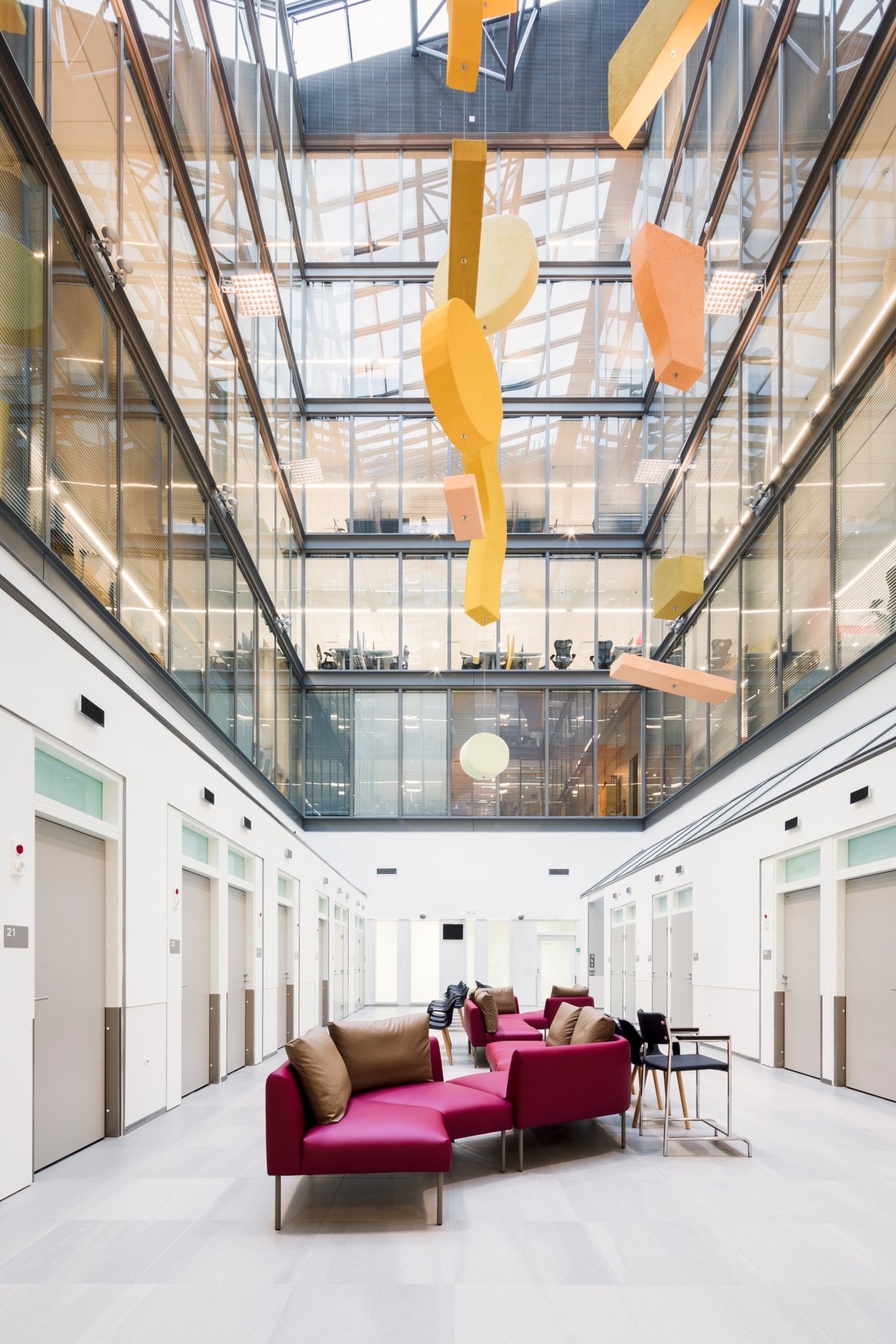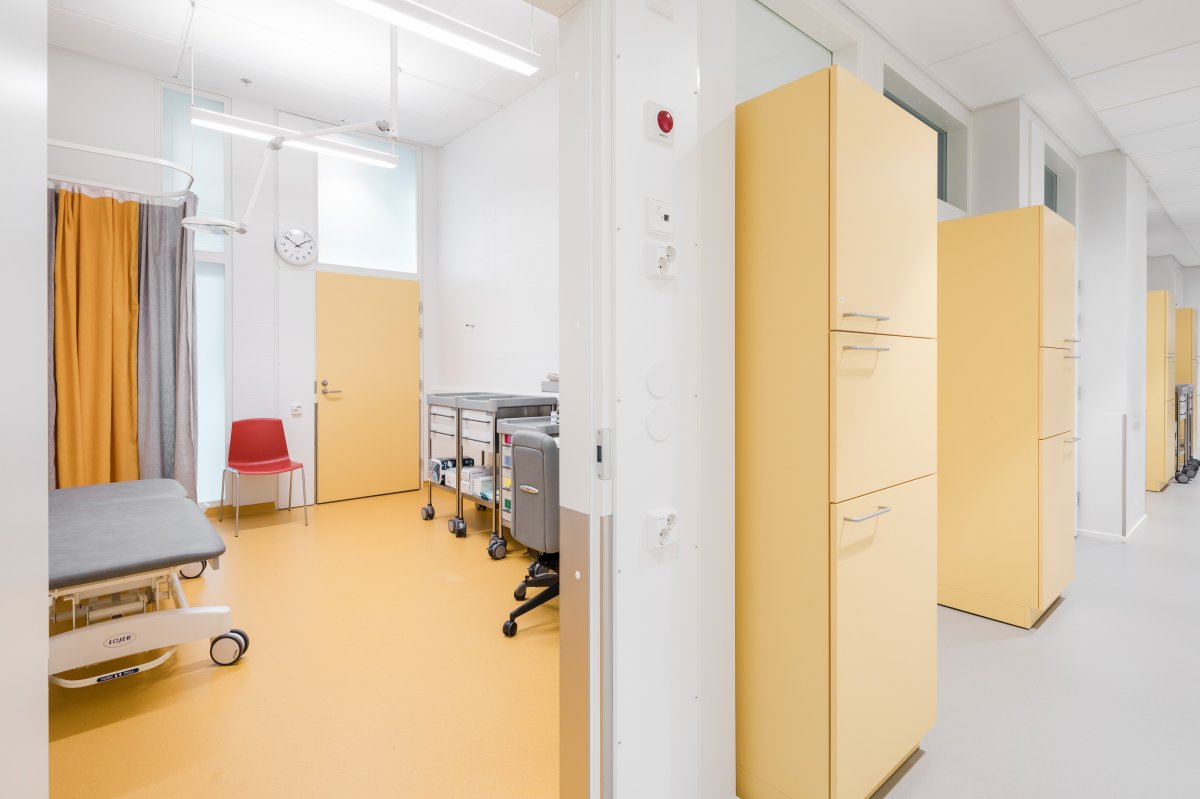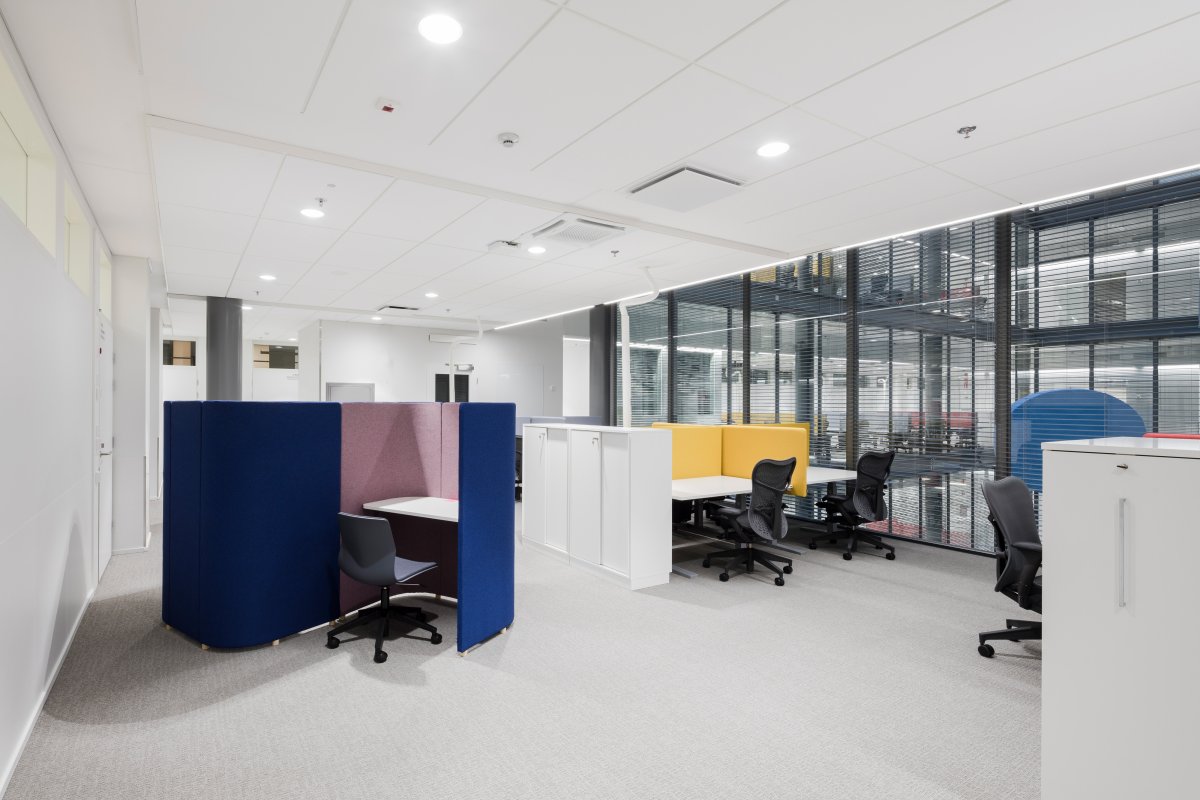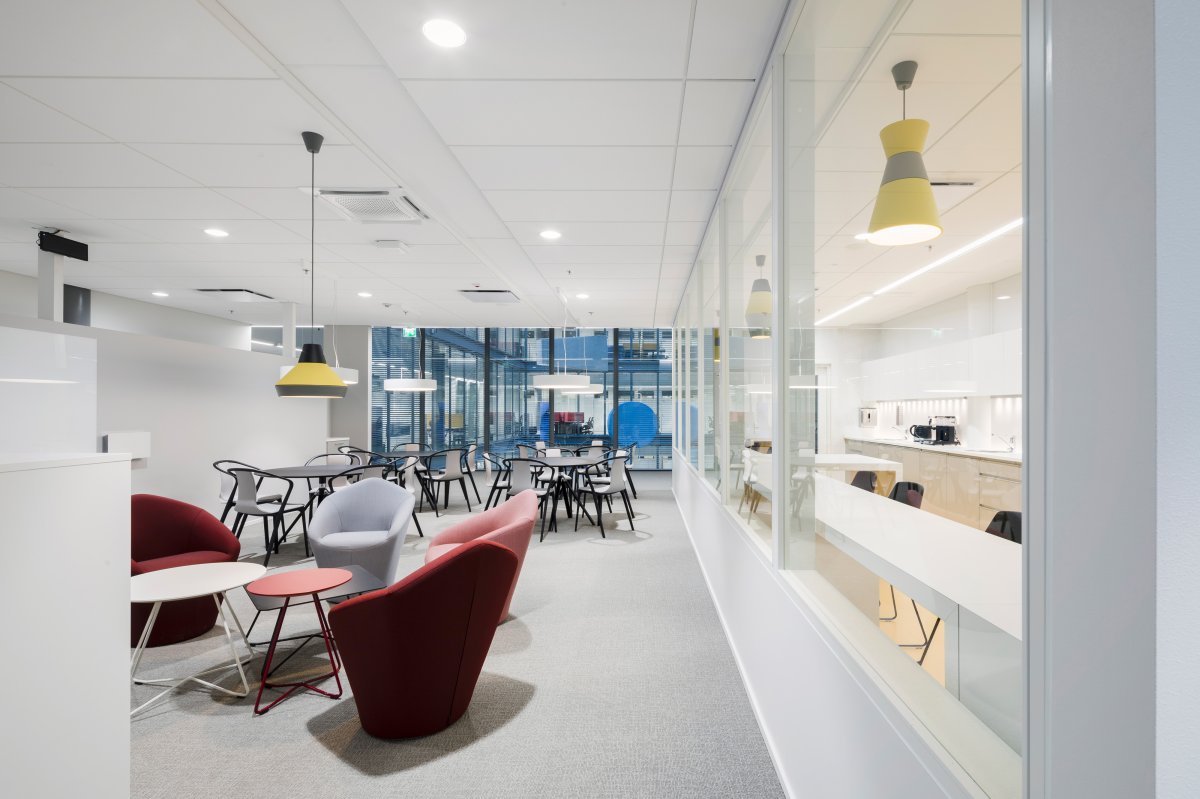In the Health and Well-being Centre, multisector professionals of social welfare and health work in close collaboration, enabling comprehensive services to the clients. Since the operations will be continuously developed, the spaces of the centre were designed to be flexibly adaptable. The consulting and treatment rooms are shared by specialists and are therefore generic and furnished to meet diverse needs. In addition, the IT equipment and electronic communication of the centre lessen the need for permanent work spaces.
Placed along the perimeter of the building is a client corridor spaced by waiting and self-service areas at the points of facade projections. The consulting and treatment rooms surround the building’s centre area, which houses background work facilities of doctors and other specialists. These receive daylight through two large light wells as well as the high opal glass windows and top windows of the consulting rooms. Both light wells have mobiles by artist Jenni Rope installed in them, serving also as sound-abating elements in the high lobby areas. The yellow-hued mobile in the eastern light well and the blue-hued in the western help orientation in the groundwork spaces.
The operations take place on the six above-ground floors. Access to the floors is from either the southern or the northern lift lobby, where clients are guided on the entrance floor. The entrance floor contains common lobby services, consulting and treatment rooms, a sampling laboratory, and a service area for seniors. On the first floor there are dental consulting rooms as well as meeting, therapy and group rooms and spaces for the maintenance of equipment. The four uppermost floors are similar with their consulting rooms and groundwork rooms. The eastern end of the ground floor houses a restaurant.
The objective was a building of public character yet approachable and open. The different coloured projections articulate and lend rhythm to the facades that are over 90 metres long. The blank areas of the ground floor are clad with slabs of natural stone. A green roof growing sedum contributes to improving air quality, assists in rainwater management and serves as an organic fifth facade towards the residential towers of the REDI centre.
The new operation model called for unusually thorough concept design and development work together with the users. Natural-size models of consulting rooms were made for testing furnishings and lighting.
The Health and Well-being Centre is situated near the metro station as well as bus and tram stops in an environment defined as an area of special accessibility standards. The routes from public means of transport to the main entrance are accessible and uninterrupted. To ensure accessibility through the winter time, the pavement in the arcade in front of the centre is heated. The City of Helsinki accessibility officer, representatives of various organisations of disabled persons and experiment users assisted in the design of the centre.







